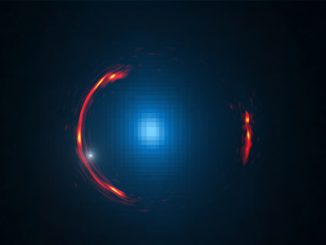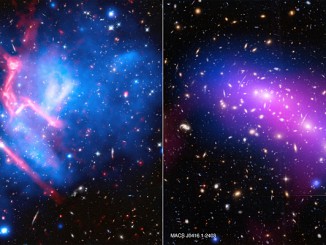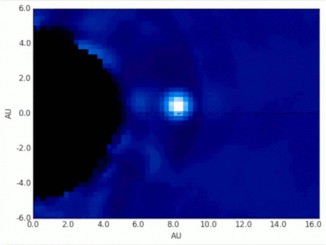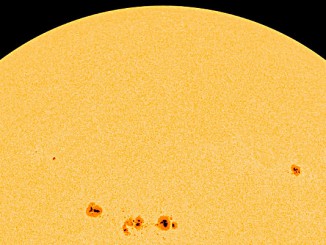
Stanford University


New theory of gravity might explain dark matter
Emergent gravity is a new theory that might explain the curious motions of stars in galaxies. It predicts the exact same deviation of motions that is usually explained by invoking dark matter. Professor Erik Verlinde, renowned expert in string theory, publishes a new research paper today in which he expands his groundbreaking views on the nature of gravity.

Dwarf dark galaxy hidden in ALMA gravitational lens image
Subtle distortions hidden in a stunning Atacama Large Millimetre/submillimetre Array (ALMA) image of the gravitational lens SDP.81 are telltale signs that a dwarf dark galaxy is lurking in the halo of a much larger galaxy nearly 4 billion light-years away. This discovery could help astronomers address important questions on the nature of dark matter.

Telescopes combine to push frontier on galaxy clusters
Galaxy clusters are enormous collections of hundreds or even thousands of galaxies and vast reservoirs of hot gas embedded in massive clouds of dark matter. To learn more about clusters, including how they grow via collisions, astronomers have used some of the world’s most powerful X-ray, optical and radio telescopes. The name for this galaxy cluster project is the “Frontier Fields”.

Stanford astronomers observe the birth of an alien planet
Stanford University researchers announce evidence of an exoplanet being born that could move us one step closer to understanding the process of planet formation around other stars. The alien planet, called LkCa 15 b, orbits a star 450 light-years away and appears to be on its way to growing into a world similar to Jupiter.

Citizen scientists discover gravitational lenses via Space Warps project
Around 37,000 citizen scientists combed through 430,000 images to help an international team of researchers to discover 29 new gravitational lens candidates through Space Warps — an online classification system which guides citizen scientists to become lens hunters, giving the public a chance to make their own scientific discoveries.

Watching an exoplanet in motion around a distant star
A team of astronomers, using the Gemini Planet Imager (GPI) on the Gemini South telescope in Chile, has given us our best view yet of an exoplanet moving in its orbit around a distant star. A series of images captured between November 2013 and April 2015 shows the exoplanet β Pictoris b as it moves through 1½ years of its 22-year orbital period.

Astronomers discover nearby Jupiter-like exoplanet enshrouded in methane
The Gemini Planet Imager instrument has discovered and photographed its first planet. Dubbed 51 Eridani b, the body is a methane-enshrouded gas giant that is the most Jupiter-like exoplanet ever directly imaged, in a planetary system just 20 million years old. It may hold the key to understanding how large planets form in the swirling accretion discs around stars.

Corrected sunspot history suggests climate change not due to natural solar trends
The Sunspot Number, the longest scientific experiment still ongoing, is a crucial tool used to study the solar dynamo, space weather and climate change. It has now been recalibrated and shows a consistent history of solar activity over the past few centuries. The new record has no significant long-term upward trend in solar activity since 1700, suggesting that rising global temperatures since the industrial revolution cannot be attributed to increased solar activity.
